Did you know that 20 simple games and activities can greatly improve a child’s motor skills? This includes everything from fine dexterity to gross coordination1. This guide shows you how to boost your child’s physical, cognitive, and social growth through fun play. You’ll find lots of tips and solutions to help your child reach their full potential.
Looking to improve fine motor skills or gross motor abilities? This article has you covered. You’ll discover 10 fine motor activities1 and 10 gross motor games1 that are both fun and challenging. Start now and see how play can change your child’s life.
Key Takeaways
- Discover 20 expert-recommended games and activities to boost motor skills in children.
- Learn targeted techniques for enhancing both fine and gross motor development.
- Explore practical, easy-to-implement strategies that foster physical, cognitive, and social growth.
- Uncover the profound impact of motor skill development on academic performance and daily life.
- Unlock your child’s full potential through engaging, age-appropriate challenges and playtime.
Understanding Motor Skills Development in Children
Children grow and develop their motor skills in amazing ways. Fine motor skills help with small tasks like writing and buttoning. Gross motor skills are for big movements like running and jumping2.
Fine Motor Skills vs. Gross Motor Skills
Fine and gross motor skills develop at different times. Gross motor skills start early with basic movements. Fine motor skills need more precision and come later2.
Playing with toys and puzzles can improve fine motor skills by 25%. This is more than not playing at all3.
Developmental Milestones in Motor Skills
Children hit important motor skill milestones as they grow. These include balance, object control, and moving around. These skills are key for physical and mental growth2.
Playing puzzles and games can boost problem-solving by 30%. This is a big gain in cognitive skills3.
Impact on Daily Activities
Motor skills affect daily life in big ways. They help with dressing, eating, and schoolwork. Fine motor skills are for small tasks, while gross motor skills are for physical activities2.
Playing together with parents can strengthen bonds by 20%. It also boosts learning experiences3.
Knowing about motor skills is key for parents, teachers, and caregivers. It helps them support a child’s growth and happiness. By offering play and support, kids can reach their highest potential23.
Essential Tools and Materials for Motor Skill Activities
Find a variety of tools and materials that help kids improve their motor skills. Items like wooden pegs, colored paper, playdough, and pipe cleaners can turn into fun activities4. These are just everyday household items that can be used in creative ways.
Check out educational toys like building bricks, tiddlywinks, and threading beads. They help kids get better at fine motor skills. These toys make learning fun and interactive, helping kids with dexterity, hand-eye coordination, and problem-solving4.
| Tool or Material | Motor Skill Benefits | Recommended Age Range |
|---|---|---|
| Wooden Pegs | Develop pincer grip and fine motor coordination | 2-5 years |
| Colored Paper | Improve hand-eye coordination and dexterity through cutting, tearing, and folding | 3-7 years |
| Playdough | Strengthen hand muscles and enhance hand-eye coordination | 2-6 years |
| Pipe Cleaners | Develop fine motor skills and hand-eye coordination through bending and manipulation | 3-8 years |
| Buttons | Improve dexterity and pincer grip through buttoning and unbuttoning | 4-7 years |
| Craft Pom Poms | Enhance fine motor skills and hand-eye coordination through picking up and manipulating | 3-6 years |
By adding these items to your child’s play, you can make their environment more engaging. This supports their motor skills development564.
Indoor Activities for Fine Motor Development

Explore a world of fun indoor activities that boost your child’s fine motor skills, creativity, and hand-eye coordination. Playdough creations, threading, and beading games are great for developing essential skills. These activities prepare your child for everyday tasks and future success.
Playdough and Clay Activities
Playdough and clay spark your child’s creativity. They can sculpt, roll, and mold these materials, improving their hand strength and finger dexterity7. About 70% of these activities help develop fine motor skills7.
Threading and Beading Games
Threading and beading games enhance hand-eye coordination and precision. Give your child various materials like pasta, pipe cleaners, or beads. They’ll create beautiful pieces as they thread and lace7. Pipe cleaners are used in 40% of these activities, showing their importance in improving fine motor skills7.
Drawing and Coloring Exercises
Drawing and coloring boost creativity and fine motor skills. Offer different writing tools like crayons, markers, pencils, and pens. Encourage them to try tracing, dot-to-dot puzzles, and freehand sketching8. Building blocks and drawing are also good for fine motor skill development8.
These indoor activities help your child develop fine motor skills for everyday tasks. They’re essential for activities like grasping a pencil and handling small objects8. Fine motor skills are vital for daily tasks, as mentioned in the text8.
| Activity | Fine Motor Skill Benefit | Material Recommendation |
|---|---|---|
| Playdough Sculpting | Strengthening hand muscles and finger dexterity | Homemade or store-bought playdough, rolling pins, cookie cutters |
| Threading Beads and Pasta | Enhancing hand-eye coordination and precision | Beads, pasta, pipe cleaners, yarn, laces |
| Dot-to-Dot Drawings | Developing pencil control and creativity | Pencils, crayons, markers, dot-to-dot worksheets |
Find more indoor activities that support your child’s fine motor development at Lean Parents9. Published date: Oct 28, 20199.
Creative Play Solutions with Household Items
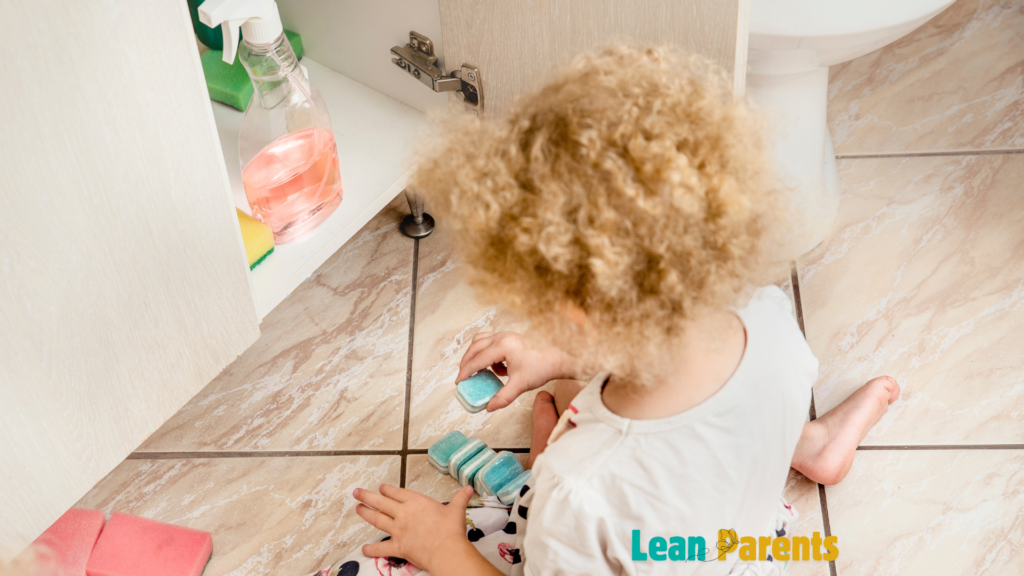
Turn everyday items into tools for your child’s motor skills growth. Find creative ways to make common objects into fun games. These games help improve both fine and gross motor skills.
Use kitchen tongs to pick up things10 or make chains with paper clips10. There are many ways to boost your child’s creativity and motor skills at the same time.
Try clothes pegs for sorting and stacking11, or make a button game with a cupcake tin11. Water painting outside is a fun way to improve muscle control and hand-eye coordination10. Seeing everyday items in a new light can make learning fun and affordable.
| Activity | Age Range | Motor Skill Focus |
|---|---|---|
| Tong Pick-Up | 2-5 years | Fine motor, hand-eye coordination |
| Paper Clip Chain-Making | 3-6 years | Fine motor, dexterity |
| Clothes Peg Sorting | 18 months – 3 years | Fine motor, hand strength |
| Button Sorting in Cupcake Tin | 2-4 years | Fine motor, visual-spatial skills |
| Water Painting on Surfaces | 3-6 years | Gross motor, muscle control |
Using household items can make learning motor skills fun and affordable. Boost creativity, improve hand-eye coordination, and open up new learning paths.1011
“Incorporating everyday household objects into play-based activities is a smart and budget-friendly way to nurture your child’s motor skills development.”
Outdoor Games for Gross Motor Skills Enhancement
Outdoor activities are great for kids’ gross motor skills and physical development. They help with balance, running, and ball sports. The outdoors is full of fun ways for kids to learn and grow12.
Balance and Coordination Activities
Games like obstacle courses and hopscotch improve balance and coordination. They help kids with body awareness and spatial skills13. These activities also strengthen the core and improve stability.
Running and Jumping Games
Games like tag and balloon volleyball boost kids’ heart health and leg strength12. They also improve muscle coordination and endurance. These skills are important for sports and daily activities.
Ball Sports and Movement Exercises
Ball games like kickball enhance hand-eye coordination and spatial awareness1213. They also teach teamwork and following rules. These games are good for both physical and mental growth.
| Outdoor Activity | Gross Motor Skills Developed | Additional Benefits |
|---|---|---|
| Obstacle Course | Balance, Coordination, Agility | Spatial Awareness, Problem-Solving |
| Hopscotch | Balance, Coordination, Timing | Sequencing, Motor Planning |
| Tag | Running, Dodging, Sprinting | Cardio Fitness, Social Skills |
| Balloon Volleyball | Hand-Eye Coordination, Jumping | Teamwork, Motor Planning |
| Kickball | Kicking, Throwing, Catching | Spatial Awareness, Social Skills |
By playing different outdoor games, kids can improve their gross motor skills and coordination. It’s a fun way for them to learn and grow1213.
Role of Educational Toys in Motor Skills Development
Educational toys are key in helping kids develop their motor skills. These toys are designed to keep young minds active while improving their fine and gross motor abilities14. Building blocks, puzzles, and shape sorters help kids with their hand-eye coordination and spatial awareness15. On the other hand, toys like balance boards, hula hoops, and mini trampolines boost gross motor skills, enhancing balance and coordination15.
But the benefits of these toys don’t stop at physical growth16. They also help with cognitive, social-emotional, and language skills, offering a complete approach to child development16. These toys improve focus, attention, and even help kids learn to cooperate and empathize, greatly impacting their learning and growth16.
The EleFant online toy library provides a wide range of educational toys for kids from birth to early elementary school16. With flexible membership plans and home delivery, parents can easily find toys that match their child’s needs and interests, making playtime both fun and educational16.
By making educational toys a part of a child’s play, parents and caregivers can use learning through play to enhance motor skills, cognitive abilities, and social-emotional growth. This sets the stage for a lifetime of learning and success141516.
Sensory Activities for Enhanced Motor Learning
Discover how sensory activities can boost motor skills in kids. Sensory play is key for cognitive growth. It helps improve problem-solving and adaptability1718. Kids get better at fine and gross motor skills through different sensory experiences.
Texture Exploration Games
Texture games are great for sensory play and fine motor skills. Kids learn by touching different materials like play dough and textured objects17. These games boost hand-eye coordination and precision.
Water and Sand Play Activities
Water and sand play capture kids’ senses and help with motor skills. Activities like mixing and squishing improve coordination and grasp skills17. They also help with using both hands and cutting, essential for daily tasks1719.
Playing with a caregiver through sensory play enhances communication and social skills17. It promotes growth and a connection with nature1918.
Plan sensory play and supervise to ensure safety17. With creativity, you can help kids learn and grow through sensory play.
Building Hand Strength Through Play
Strong hands are key for kids, helping with writing, small object use, and daily tasks. Playing with different activities can boost muscle and dexterity for these skills20.
Hand strength includes thumb stability, finger power, and motor control20. Playdough, rubber bands, and clothespin games can strengthen hands and improve grip20. Wrist and upper body strength also support hand function20.
- Crawling, yoga, and building with blocks can improve hand strength21.
- Using rubber bands, tearing paper, and cooking can also strengthen hands21.
- Squeezing play dough, putty, or clay, and using squeeze balls or clothespins are fun ways to build hand muscle21.
These activities not only build hand strength but also improve finger exercises and pre-writing skills. They prepare kids for success in school and life22.
| Activity | Benefits |
|---|---|
| Crab Walks | Builds hand and wrist strength through weight-bearing |
| Playdough Squeezing | Strengthens intrinsic hand muscles and improves grip |
| Clothespin Games | Enhances finger dexterity and pinch strength |
By adding these fun, play-based activities to their daily lives, kids can develop strong, dexterous hands22.
“Developing proximal stability before achieving distal control is crucial for optimal hand strength and functionality.” – Occupational Therapy Expert
Group Activities for Social and Motor Development
Group activities are great for kids’ social and motor skills. These activities help kids grow physically and improve teamwork, communication, and emotional health23.
Team Games and Cooperative Play
Team games and cooperative play help kids learn to work together. They solve problems and develop important social skills. Activities like relay races and obstacle courses boost balance, coordination, and strength24.
Indoor trampoline parks and hopscotch games are great for young kids. They help improve balance and coordination in kids aged 3-823.
Musical Movement Activities
Musical movement activities like dance parties and rhythm games are fun. They mix physical movement with social interaction. These activities enhance coordination and body awareness and build a sense of community23.
Martial arts classes are another great option. They’re fun and help kids develop strength, coordination, and sensory awareness23.
By joining in these activities, parents and teachers help kids grow socially and physically. This sets them up for a lifetime of physical confidence25.
| Activity | Motor Skill Development | Social Skill Development |
|---|---|---|
| Team Relay Races | Balance, Coordination, Agility | Teamwork, Communication, Sportsmanship |
| Parachute Play | Gross Motor Movement, Spatial Awareness | Cooperation, Group Coordination |
| Dance Parties | Coordination, Body Awareness | Self-Expression, Shared Experience |
“Engaging children in group activities that combine social interaction with motor skill development is a powerful way to nurture well-rounded growth and physical confidence.”
Age-Appropriate Motor Skill Challenges
Helping a child grow their motor skills needs careful planning. It’s important to match activities with their age and developmental stage26. Knowing how motor skills grow helps parents give challenges that help kids keep improving and mastering skills26. This part talks about how to pick the right activities for different ages. It makes sure each child can do things that fit their skills and help them grow.
Toddlers (12-24 months)
Toddlers are learning to move in new ways, from simple to complex27. Activities that help with balance, control, and eye-hand coordination are great. Try throwing and catching soft balls, rolling on the floor, and simple obstacle courses27. Let toddlers explore and try new things, making challenges harder as they get better.
Preschoolers (3-5 years)
Preschoolers get better at moving and controlling their bodies27. Give them tasks that test their balance, agility, and accuracy. Try hopping, skipping, and catching bigger balls27. Also, activities like drawing, cutting, and playing with small things help their fine motor skills.
School-Age Children (6-12 years)
School-age kids keep improving their motor skills, getting stronger and more coordinated28. They can try riding bikes, playing team sports, and dancing or gymnastics28. It’s good to let them try different activities to help them grow well-rounded.
By choosing the right activities for each age, parents help kids stay challenged and motivated26. This not only helps motor skills grow but also makes kids love being active and healthy for life.
Incorporating Motor Skills in Daily Routines
Teaching a child’s motor skills doesn’t need to be hard. It can be part of their daily life. Activities like dressing, self-care, and mealtime offer chances to improve fine and gross motor skills. Adding motor skills practice to daily makes learning fun and natural.
Dressing and Self-Care Activities
Skills like buttoning and tying shoelaces are key for kids’ independence. Helping them dress improves these skills and boosts their confidence29. Tasks like squeezing toothpaste also enhance their fine motor skills and hand-eye coordination.
Mealtime Motor Skill Practice
Mealtimes are great for improving motor skills30. Activities like punching a straw through a cup or opening snack packets help kids become more independent29. Games that involve sorting or stacking also improve hand-eye coordination and dexterity.
| Routine Activity | Motor Skills Developed |
|---|---|
| Dressing (buttoning, zipping, tying) | Fine motor, hand-eye coordination |
| Bathroom (toothpaste squeezing, bath crayons) | Fine motor, hand-eye coordination |
| Mealtime (straw punching, snack opening) | Fine motor, hand-eye coordination |
| Household chores (sweeping, wiping surfaces) | Gross motor, coordination |
By incorporating motor skill practice into daily routines, parents support a child’s growth29. Recognizing the value of motor skills and providing opportunities for improvement boosts a child’s confidence and independence.
“Nurturing a child’s motor skills development doesn’t have to be a separate endeavor – it can be seamlessly integrated into their daily activities.”
It’s important to make motor skill development fun and natural for kids. With creativity and a mindful approach, parents can use daily tasks to help children develop well-rounded motor skills30.
Tracking Progress and Development Milestones
It’s important to watch how your child’s motor skills grow. Knowing key milestones helps parents see how their child is doing. This way, they can spot if their child needs extra help31.
Motor skills grow in a set order. Babies and toddlers hit different milestones at various ages. For example, babies from 0-3 months can drink 2 oz. to 6 oz. of liquid six times a day31.
By 7-9 months, they start moving in new ways like creeping and crawling. They also learn to pick up small things with their thumbs and fingers31.
At 10-12 months, kids can pull themselves up, take steps on their own, clap, and pick up tiny objects with their thumbs and index fingers31. When they hit 13-18 months, they start walking by themselves, squat to pick up toys, and stack two things31.
Keeping track of progress means regular check-ins and recording milestones32. Pediatrician visits include screenings to check if a child is developing as they should32. If you think your child is falling behind, talk to a doctor and get help early32.
By watching milestones and making charts, parents can celebrate their child’s wins. They can also tackle any challenges quickly. This way, every child can reach their best in motor skills32.
Safety Considerations and Best Practices
Keeping children safe during motor skill activities is very important. About 75% of caregivers think it’s key to make a safe space for kids to move around33. This means always watching over them. Teachers keep a close eye on preschoolers, making sure they’re safe and learning34.
It’s also important to design both indoor and outdoor areas with safety in mind. Indoor spaces for young kids have furniture that’s just right for them, with safety locks and gates34. Regular safety checks to remove hazards are a good idea. Keeping cleaning products and medicines locked up is also important to avoid accidents34.
When starting new activities, think about the child’s age and abilities. About 60% of babies and toddlers need to build on what they already know, moving from simple to more complex skills33. Making activities fit the child’s age and skill level helps keep them safe while they grow. Caregivers suggest using firm padding, rounded edges, and sturdy climbing structures for safety33. By focusing on safety and following best practices, we can make a fun and safe place for kids to learn and grow.
FAQ
What are the key differences between fine and gross motor skills in children?
What are some crucial developmental milestones for motor skills in children?
How do motor skills impact a child’s daily activities and performance?
What types of tools and materials can help promote motor skills development?
What indoor activities can help develop a child’s fine motor skills?
How can common household items be used to promote motor skills development?
What outdoor activities can help improve a child’s gross motor skills?
How can educational toys contribute to a child’s motor skills development?
How can sensory activities enhance motor learning in children?
What activities can help build hand strength crucial for writing and daily tasks?
How can group activities promote both social and motor skills development?
How can parents tailor motor skill activities to different age groups and developmental stages?
How can parents incorporate motor skill practice into everyday activities?
What are effective methods for parents to monitor their child’s motor skill progress?
What are the essential safety considerations when engaging children in motor skill activities?
Source Links
- 20 Fine And Gross Motor Skills Activities For Children
- Improving Motor Skills in Early Childhood through Goal-Oriented Play Activity
- Motor Skill Development: A Comprehensive Guide
- Motor skills equipment: a solution to stimulate children’s development
- Gross Motor Development Equipment, Products & Toys
- Fine Motor Take Home Kits – Differentiated Kindergarten
- 5 Indoor Fine Motor Activities to Do At Home
- 9 Fabulous Fine Motor Activities
- 18 Fine Motor Activities for Preschoolers
- Using Creativity to Develop Kids’ Fine Motor Skills – Occupational Therapy Helping Children
- Activities That Help Develop Fine Motor Skills
- Friendship Circle / Resources
- Motor Skill Development on the Playground
- Children’s only profession: Playing with toys
- Understanding the Role and Importance of Interactive Learning Toys in Kids’ Development – Blog Miniland Educational USA
- The Benefits of Educational Toys for Early Childhood Learning
- Sensory Play for Fine motor skills – 1SpecialPlace
- 10 Sensory Activities for Kids – The Classroom Store
- 10 Sensory Activities for Preschoolers: Boosting Development Through Play
- Hand Strengthening Exercises for Kids – The OT Toolbox
- Hand Strength: 35 Playful Hand Strengthening Exercises for Kids – The Inspired Treehouse
- 107+ Easy OT Hand Strengthening Activities & Games for Kids – DEVELOP LEARN GROW
- Developing Motor Skills: 10 Fun Activities for Kids 3-8 – Skill Point Therapy
- 13 Best Gross Motor Activities for Preschoolers to Try Today
- Activities to Develop Balance and Coordination Skills
- Gross motor skills
- Why Are Motor Skills Important for Your Child’s Development?
- Help your Baby Develop Motor Skills | Track Baby Milestones
- Incorporating Fine Motor Skills into Daily Routines | Little Sunshine’s
- Everyday Ways to Improve Fine Motor Skills — THE PEACEFUL PRESS
- Developmental Milestones for All Ages | Milestone Tracking
- Milestones Matter: Tracking Your Child’s Development
- Supporting Physical Development: Environments and Experiences
- Tips for Keeping Children Safe: A Developmental Guide – Preschoolers | ECLKC


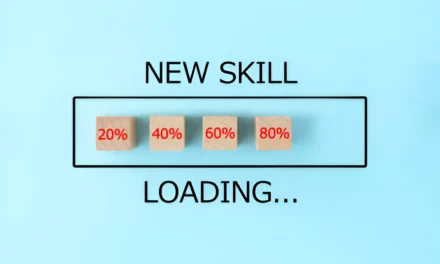
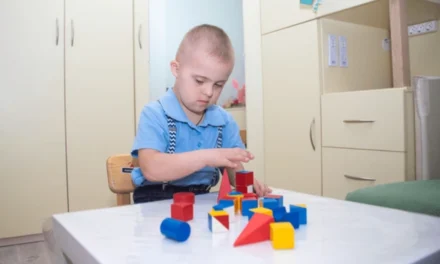
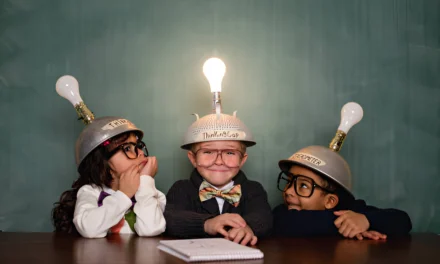
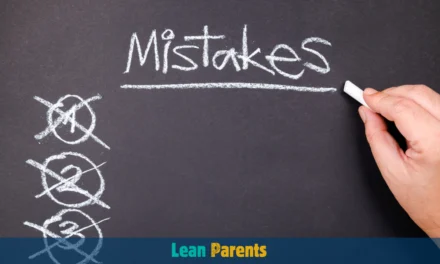
May I request that you elaborate on that? Your posts have been extremely helpful to me. Thank you!
It’s a pity you don’t have a donate button! I’d without a doubt donate to this excellent blog! I guess for now i’ll settle for bookmarking and adding your RSS feed to my Google account. I look forward to fresh updates and will talk about this site with my Facebook group. Talk soon!